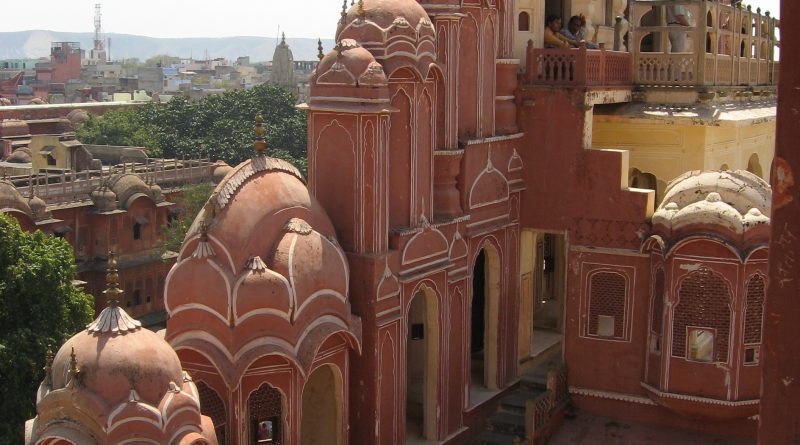Palace of Winds and Jantar Mantar, Jaipur
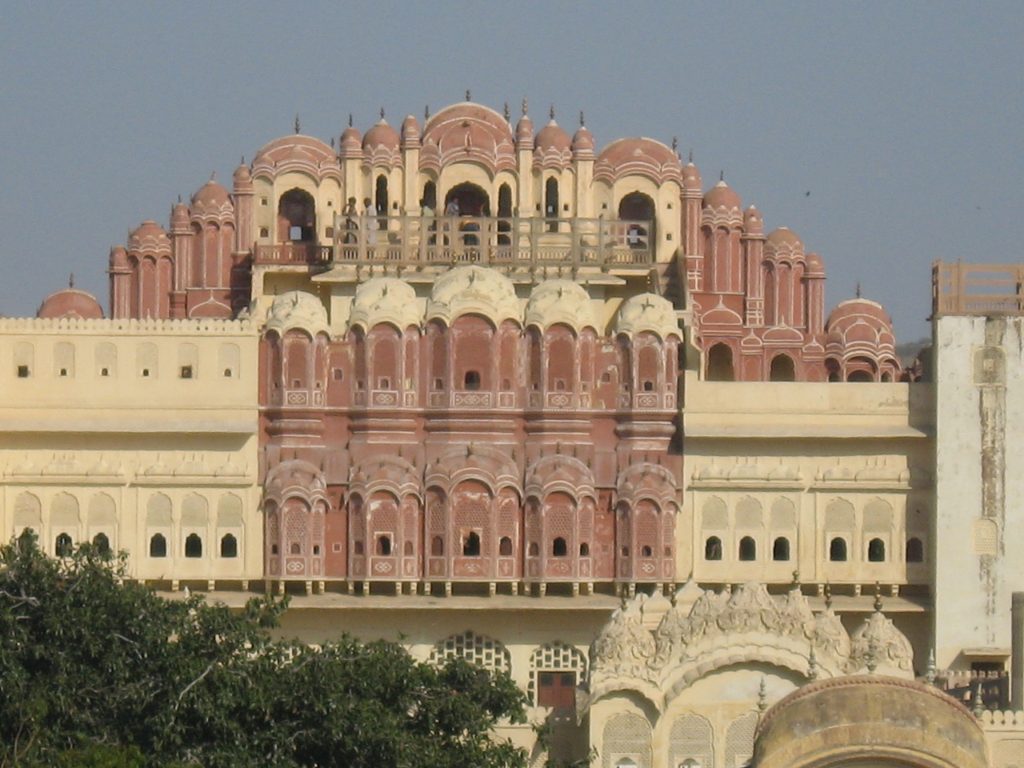
A bunch of rickshaw taxi drivers crowd around us as soon as we leave the station; we choose the most smiling one to whom we entrust the address of our pension. “That one?” he asks incredulously “That pension is dirty, not good for you ladies! I’ll take you to a better one! “
I had spent half a day looking for a free room in the whole city and the only one I found was “that”. “No thanks, take us there” I reply.
“Okay, but I wait outside if you change your mind” accepts the kind taxi driver and so he does. Of course, the hostel is not the height of elegance, the walls are blackened and there is the usual smell of bleach, but for one night we can survive.
We hurry through the formalities and we go out for a walk; first stop: the Palace of Wind. Jaipur, capital of Rajasthan, is certainly smaller than New Delhi, but busy and crowded like the big metropolis; black rickshaws trumpeting and surpassing the hundreds of bicycles that are tired to proceed in the messed up traffic, rusty trucks and cars, overflowing retro buses … The usual children who stop you asking for money and to whom we punctually give food, beautiful girls jeweled with showy rattles carrying goods on their heads, barbers shaving in the open air, merchants, holy men and monkeys, brown and sly monkeys that roam everywhere and sneak up on you.
People are busy preparing Holi, the great spring festival or rite of seasonal passage where the family is celebrated. We are at the beginning of March, spring has arrived like a thunderbolt, making me abandon the jacket for short sleeves; already like summer days. Guys prepare bundles of straw around the streets to turn into big bonfires.
The Palace of Winds
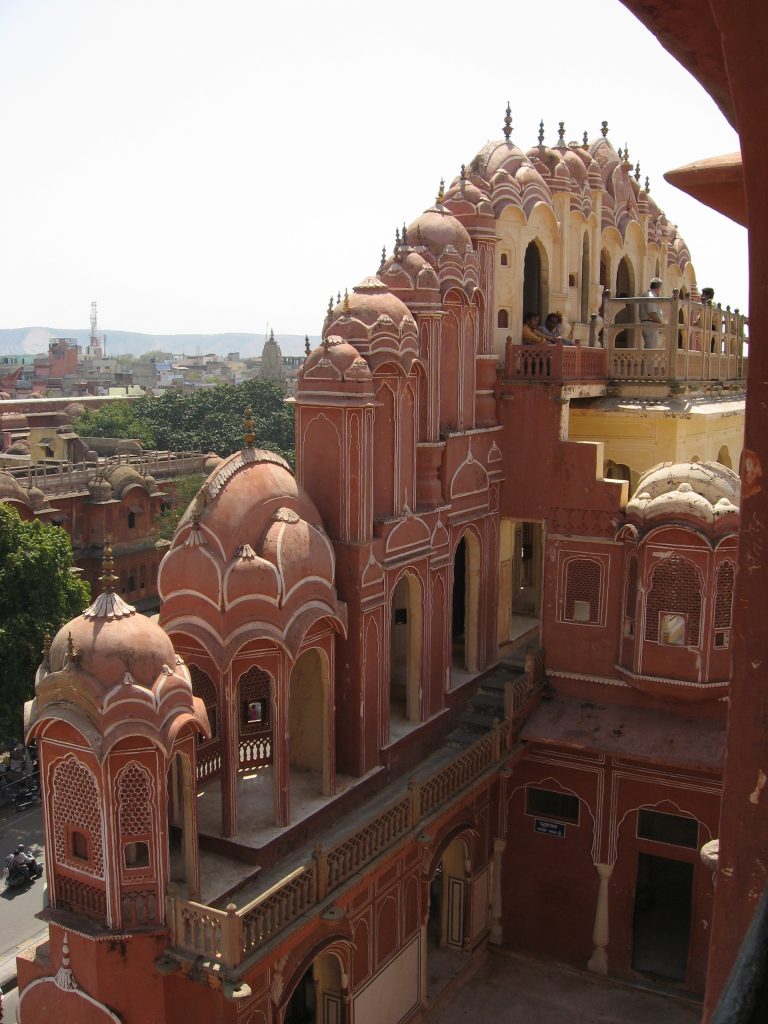
The buildings of the historic center are pinkish, due both to the use of sandstone and to the painting imposed by municipal law; since pink is the official color of Jaipur. We arrive at the entrance of the splendid Wind Palace or Hawa Mahal, so called because of the air currents created by the 953 windows of the high pink facade.
Built in 1799 by order of the Maharajà Sawai Pratap Singh, the purpose of the building was to allow the women of the court, who were forbidden to show themselves in public, the possibility of attending city events, such as parades, without being seen by the common people. In this way they could look out on one of the many windows of the building and watch the important events of the capital respecting the tradition.
Restoration work is underway and the scaffolding, a web of unstable beams that I would never work on, limit the full sight of the facade, erected as a model of Krishna’s crown, with soft curved lines, chiseled with shapes that recall those of a giant beehive.
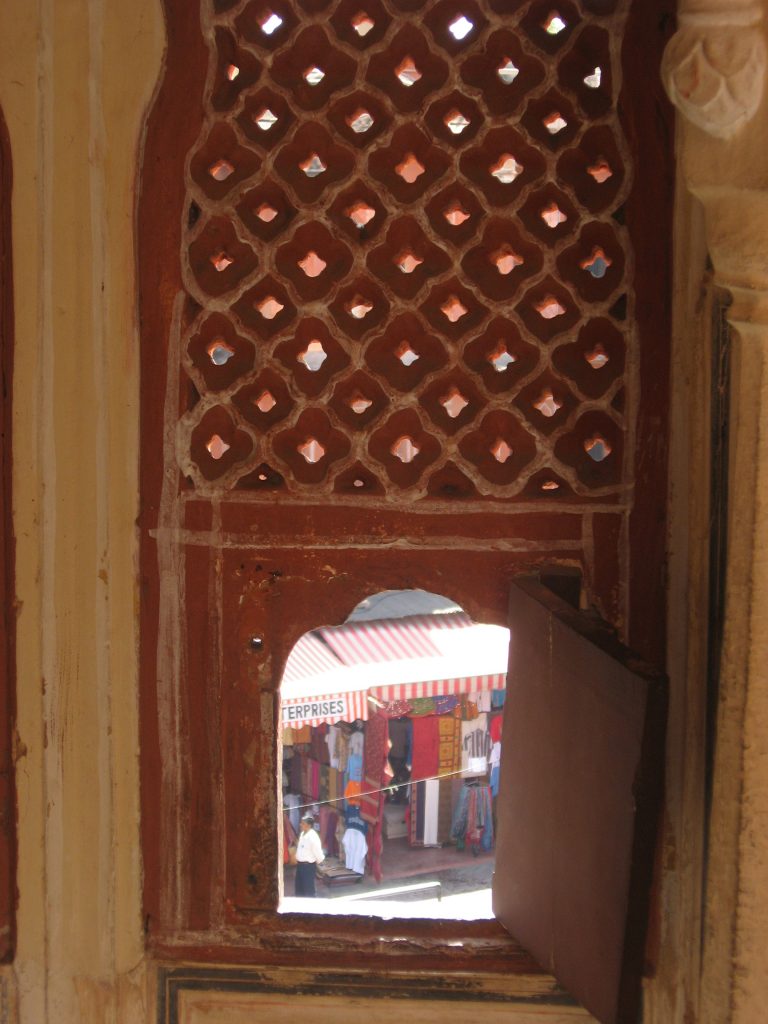
The baroque style of the facade contrasts with the simpler interior white; we walk through the open courtyard and climb the stairs that lead to the balconies where the noble courtesans used to stand. The corridors are narrow, while the windows play with full and empty spaces; my mother and I have fun leaning out of the holes in different positions, lowering ourselves to go out and greeting each other from opposite sides. The location is pleasant, the view of the street is excellent and a light breeze caresses your face.
The Astronomic Observatory

From the top of the Palace of the Winds, my attention had been caught by strange constructions erected behind the Palace: they looked like huge slides and I just couldn’t imagine what they could ever serve. With the guide in hand, we go down the street of the historic center and find ourselves in front of the arcane.
I read on the map that here is the ancient Astronomical Observatory built by the Sawai Jay Singh II marajhà, completed since 1734, the best preserved one of the various sites built in the same period and UNESCO heritage.
My curiosity drives me to enter. I do not understand very much how these ascending stairways and enormous underground hemispheres filled with geometric lines could be instruments used to calculate the movements of the celestial bodies visible from here. They tell me that the Ptolemaic system was used, but I know how soon.
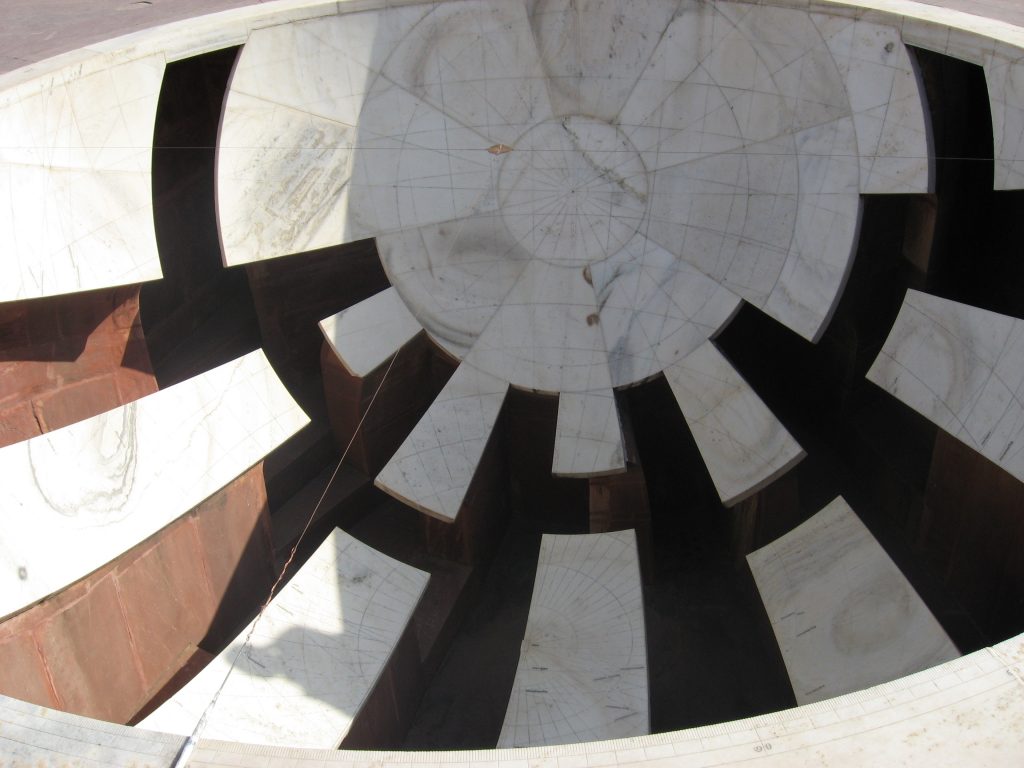
I discover that the place is called Jantar Mantar, from the Yantra; these strange instruments used for astronomical calculation. However, I am impressed by Marajhà’s desire to conquer astronomical notions, so as to have 5 other sites built all over Northern India.
For information about City Palace, click here.

